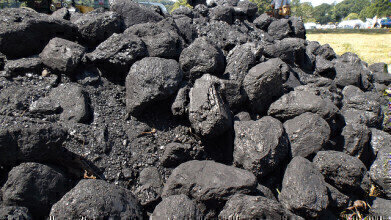GC, MDGC
Cleaning Up the Coal Industry with the Help of Chromatography
Jan 12 2015
With an increasing focus being placed on our environmental footprints and a collective responsibility to look for safer, cleaner methods of energy harvesting, the coal industry has come under sustained attack from several quarters. High emissions of greenhouse gases, along with the contamination of local water and other environmental concerns have meant that coal-burning factories have long been seen as pollutants for our atmosphere.
In an effort to counteract these harmful effects and change its image, the coal industry has been taking several measures to ensure it minimises pollution while still maximising production. Gas chromatography (GC) and liquid chromatography (LC) have been two key elements in ensuring this happens.
Preventative Measures
For more than a decade, major coal exporters such as Teck Resources in British Columbia have been monitoring and managing their emission levels of greenhouse gases such as carbon dioxide (CO2) in a bid to try and limit the harmful effects such gases can have on our planet. The biggest cause of these emissions is the actual mining process itself, while the second biggest source is the methods of treatment (cleaning, screening and drying the mined coal).
By using a two-pronged attack to attempt to minimise harmful outputs from both of these sources, coal exporters are doing their utmost to reduce their carbon footprint. When it comes to the mining process, this involves monitoring and minimising the number of trucks used to transport the coal and the amount of time each truck is in use, as well as using fuel-efficient vehicles.
Meanwhile, the drying process can be powered by natural gas, instantly reducing emissions, whilst its intensity can also be tailored to the exact needs of the sample coal, meaning that not an extra drop of energy is expended and thus nothing is wasted. In this manner, CO2 levels are kept at an absolute minimum.
Chromatography in Contaminant Control
Science has already taken great strides in ensuring that mining workplaces are becoming safer every day – this article, Gas Sensing Technology Improves Mine Safety, talks in detail about how modern technological equipment has improved safety in the mines drastically, thus potentially saving many lives.
Now, science is also able to improve safety from mining on a more global scale by protecting the environment in which we live. Groundwater around the mines is susceptible to becoming contaminated by iron sulphide and other metals, which can lead to the creation of dilute sulphuric acid. This is most undesirable, and so to rid the water of any harmful elements, GC and LC are used in conjunction with mass spectrometry (MS) to detect the presence of any unwanted organic material. Then, another technique known as inductively-coupled plasma (ICP), is used to analyse metals latent in the samples. From this data, technicians are able to determine which course of action to take to ensure that all water returns to the Earth in a natural and uncontaminated state.
Though clean, renewable energy is the ultimate goal of power providers (especially with fossil fuels running out), at the moment, reliance entirely upon them for our energy needs is simply not feasible. In the meantime, chromatography is helping to clean up the coal industry with increasingly cheaper water treatment facilities, making for a greener tomorrow.
Image Source: Coal
Digital Edition
Chromatography Today - Buyers' Guide 2022
October 2023
In This Edition Modern & Practical Applications - Accelerating ADC Development with Mass Spectrometry - Implementing High-Resolution Ion Mobility into Peptide Mapping Workflows Chromatogr...
View all digital editions
Events
Apr 23 2024 Kintex, South Korea
Apr 23 2024 Seoul, South Korea
Apr 28 2024 Montreal, Quebec, Canada
May 05 2024 Seville, Spain
May 15 2024 Birmingham, UK














